This article was co-authored by Tu Anh Vu, DMD. Dr. Tu Anh Vu is a board certified dentist who runs her private practice, Tu's Dental, in Brooklyn, New York. Dr. Vu helps adults and kids of all ages get over their anxiety with dental phobia. Dr. Vu has conducted research related to finding the cure for Kaposi Sarcoma cancer and has presented her research at the Hinman Meeting in Memphis. She received her undergraduate degree from Bryn Mawr College and a DMD from the University of Pennsylvania School of Dental Medicine.
wikiHow marks an article as reader-approved once it receives enough positive feedback. In this case, several readers have written to tell us that this article was helpful to them, earning it our reader-approved status.
This article has been viewed 1,062,612 times.
Plaque is the accumulation of bacteria, dead cells, and debris on your teeth. It is invisible to the eye, but is harmful to the teeth as it interacts with certain foods, releasing an acid which causes tooth decay. Built-up plaque can also turn into tartar, which is much harder to remove, and can cause gum recession and inflammation. Removing plaque is very easy to do, as it involves little more than an effective cleaning!
Steps
Brushing Away the Plaque
-
1Locate plaque using a stain. Plaque is practically invisible, so it can be very difficult to know how much is on your teeth. To overcome this, you can purchase "disclosing tablets" in the grocery or drugstore. Once chewed, these tablets will stain the plaque on your teeth bright red, making it easy for you to examine your teeth for plaque and identify the areas you need to target with a toothbrush.
- Green food coloring applied to your teeth with a q-tip will have the same effect, staining your teeth green for easy plaque identification.
-
2Use the right kind of toothbrush and toothpaste. To effectively brush your teeth and ensure that you are getting rid of as much plaque as possible, it is important that you have the right tools. Although there are many fancy toothbrushes on the market, the American Dental Association states that any "soft nylon brush with rounded-end, polished bristles" will do the trick.[1] Hard bristled toothbrushes can be too abrasive and wear away tooth enamel and hurt your gums. Even if you are not using the correct brushing technique, soft bristles will still be better.
- You will also need a good fluoride toothpaste. Fluoride strengthens teeth and protects them from decay and from the formation of cavities.
- Electric toothbrushes are not any more effective at cleaning teeth than regular manually-operated ones. However, some people find that they are inclined to brush their teeth more regularly and for longer when they own an electric toothbrush, so investing in one may not be a bad idea.
- Dentists recommend that you should replace your toothbrush every 3 to 4 months, as they become less effective at cleaning over time.
Advertisement -
3Use the correct brushing technique. When brushing your teeth, hold the toothbrush at a 45 degree angle against the gum line and sweep the brush away from the gums, in a short vertical, back-and-forth, or circular motions. Try not too scrub too hard, as this can actually damage the enamel on your teeth and cause high sensitivity to any type of stimulus.[2]
-
4Focus on each tooth individually. Pay attention to each tooth as you brush, making sure that you don't miss any. Remember to brush the outer surfaces, the inner surfaces and the chewing surfaces, and pay some special attention to those hard to reach teeth at the back. Brushing your teeth properly should take about two minutes -- try using a stopwatch to get a feel it, and hum a song to yourself to pass the time.
-
5Remember to brush your tongue. Plaque can easily build up on the surface of the tongue due to food residues, so make sure to give it a little gentle scrub too. This will also help to freshen your breath.
- When you brush your tongue, go from the back to the front of your mouth and repeating the gentle brushing motion 4 or 5 times.
Practicing Good Oral Hygiene
-
1Brush your teeth twice daily. Brushing your teeth is by far the most effective way of removing plaque, and brushing properly and regularly will help to ensure that less plaque builds up over time. This is important as built-up plaque can calcify into tartar, which is a lot harder to remove. You should brush your teeth once a day at the very least, but dentists recommend brushing twice; once in the morning and once before bed.[3]
- It is important to brush before bed because during night, bacterial flora becomes more active eliminating acids that are hard to neutralize because of the reduced flow of saliva.
-
2Floss between your teeth. Flossing is an essential component of effective oral hygiene, though unfortunately it is often neglected. Flossing removes bacteria and food particles from between the teeth, helping to prevent the formation of plaque. It should be done once a day, at bedtime, before brushing your teeth. Floss between teeth using a gentle sawing motion, and lifting the floss along the sides of the teeth. Avoid "snapping" the floss into place, as this can irritate the delicate gum tissue.[4]
- Make sure to use a clean section of floss for between each tooth, otherwise you are just moving bacteria from one part of your mouth to another.
- If you find dental floss awkward to use, try using a dental pick instead. This is a small wooden or plastic stick which can be inserted between the teeth, achieving the same results as flossing.[2]
-
3Use a mouthwash that targets plaque. Though plaque-busting mouthwashes are not effective enough to remove plaque all by themselves, when used as part of a teeth cleaning routine involving brushing and flossing, they can help to loosen plaque, while giving you minty-fresh breath in the process.
- Chlorhexidine digluconate is the most effective mouthwash against any type of oral bacteria, but it should not be used for more than two weeks in a row.
-
4Avoid sugary and starchy foods. The bacteria found in plaque thrive on sugary and starchy foods. In fact, every time you eat these kinds of foods, the bacteria release an acid which leads to tooth decay and cavities. To avoid this, try to minimize your consumption of these types of processed foods and pay special attention to your brushing and flossing routine if you decide to indulge.[5]
-
5Get regular, professional cleanings. Even if you implement the most rigorous oral hygiene routine at home, you can still benefit from a visit to the dentist every six months or so. Only a dentist can give you the thorough, professional cleaning which will remove the most hard-to-reach plaque and stubborn tartar.[6]
Trying Home Remedies
-
1Use baking soda. This is one of the oldest natural remedies for home plaque removal. Simply shake a small amount of baking soda into a bowl, wet your toothbrush, then dip the bristles into the baking soda to coat. Brush your teeth as normal. If you like, you can also mix a pinch of salt into the baking powder.[7]
- Avoid brushing with pressure when you use baking soda as toothpaste. Also, do not use baking soda for more than five days in a row because it is abrasive and may damage your tooth enamel if you use it too often.
-
2Eat apples and melons. Eating an apple or some melon directly after a meal will help to clean your teeth naturally and prevent plaque from building up on the surface of your teeth. This will also help to keep gums healthy and prevent them from bleeding.
-
3Rub orange peel on your teeth. The vitamin C in citrus fruits such as oranges may help to prevent microorganisms from growing on the surface of teeth. Try rubbing the rind of the orange over the surface of your teeth before going to sleep at night.
-
4Chew sesame seeds. Chew a spoonful of sesame seeds, but do not swallow. Then use a dry toothbrush to brush your teeth, using the sesame seeds as a kind of toothpaste. They will help to remove plaque and polish your teeth at the same time.[8]
-
5Apply tomatoes and strawberries to your teeth. Tomatoes and strawberries, like oranges, are rich in vitamin C. Cut them open and rub the juice on the surface of the teeth, leaving it to sit for about five minutes. Do not use strawberries or tomatoes or apples or oranges or any other plaque removing foods if you're allergic to them. Rinse out your mouth with a solution of baking soda dissolved in water.[9]
-
6Make a homemade toothpaste. If you prefer to stay away from the array of chemicals found in most store-bought toothpastes, it is possible to make your own plaque-busting natural version, using just a few simple ingredients. Combine 1/2 cup of coconut oil with 2 to 3 tablespoons of baking soda, 2 little packets of stevia powder and 20 drops of your chosen essential oil, such as peppermint or cinnamon. Store your homemade toothpaste in a small glass jar and use just like regular toothpaste.[10]
Expert Q&A
-
QuestionAre there many bacteria in tartar?
 Joseph Krajekian, DMDDr. Krajekian is a board certified Oral and Maxillofacial Surgeon at the Cleveland Clinic in Ohio. He received his DMD from Tufts University School of Dental Medicine in 2002. After obtaining his DMD, Dr. Krajekian went on to obtain his MD from Drexel College of Medicine.
Joseph Krajekian, DMDDr. Krajekian is a board certified Oral and Maxillofacial Surgeon at the Cleveland Clinic in Ohio. He received his DMD from Tufts University School of Dental Medicine in 2002. After obtaining his DMD, Dr. Krajekian went on to obtain his MD from Drexel College of Medicine.
Board Certified Oral & Maxillofacial Surgeon Tartar is also known as hardened plaque. It is composed of organic and inorganic compounds. The organic compounds consist of bacteria and the inorganic compounds consist of various minerals, mostly calcium phosphate crystals. It has been estimated that every gram of tartar has over 200 million bacteria.
Tartar is also known as hardened plaque. It is composed of organic and inorganic compounds. The organic compounds consist of bacteria and the inorganic compounds consist of various minerals, mostly calcium phosphate crystals. It has been estimated that every gram of tartar has over 200 million bacteria. -
QuestionHow can I remove tartar on my teeth?
 Joseph Krajekian, DMDDr. Krajekian is a board certified Oral and Maxillofacial Surgeon at the Cleveland Clinic in Ohio. He received his DMD from Tufts University School of Dental Medicine in 2002. After obtaining his DMD, Dr. Krajekian went on to obtain his MD from Drexel College of Medicine.
Joseph Krajekian, DMDDr. Krajekian is a board certified Oral and Maxillofacial Surgeon at the Cleveland Clinic in Ohio. He received his DMD from Tufts University School of Dental Medicine in 2002. After obtaining his DMD, Dr. Krajekian went on to obtain his MD from Drexel College of Medicine.
Board Certified Oral & Maxillofacial Surgeon The best way to have the plaque removed is by a dental professional, such as a dental hygienist. Some hygienists use an ultrasonic instrument called a Cavitron, others use a dental scaler instrument, and others use a combination of the two. There are also scalers that you can purchase from your local pharmacy to scrape off visible plaque, but if you use the scaler incorrectly then you can cause more damage to your teeth and gums.
The best way to have the plaque removed is by a dental professional, such as a dental hygienist. Some hygienists use an ultrasonic instrument called a Cavitron, others use a dental scaler instrument, and others use a combination of the two. There are also scalers that you can purchase from your local pharmacy to scrape off visible plaque, but if you use the scaler incorrectly then you can cause more damage to your teeth and gums. -
QuestionHow can I remove black plaque from between my teeth at home?
 Cristian Macau, DDSDr. Macau is an oral surgeon, periodontist, and aesthetician at Favero Dental Clinic in London. He received his DDS from Carol Davila University of Medicine in 2015.
Cristian Macau, DDSDr. Macau is an oral surgeon, periodontist, and aesthetician at Favero Dental Clinic in London. He received his DDS from Carol Davila University of Medicine in 2015.
Doctor of Dental Surgery The best way to do that is by flossing every day before going to bed or anytime you feel uncomfortable - especially after eating meat. Flossing should be completed by a rinse with mouthwash or using the jet from the oral irrigator.
The best way to do that is by flossing every day before going to bed or anytime you feel uncomfortable - especially after eating meat. Flossing should be completed by a rinse with mouthwash or using the jet from the oral irrigator.
References
- ↑ http://health.howstuffworks.com/wellness/natural-medicine/home-remedies/home-remedies-for-tartar-and-plaque1.htm
- ↑ 2.02.1http://www.colgate.com/app/CP/US/EN/OC/Information/Articles/Oral-and-Dental-Health-Basics/Common-Concerns/Plaque-and-Tartar/article/Plaque-What-is-it-and-How-do-we-get-rid-of-it.cvsp
- ↑ Tu Anh Vu, DMD. Board Certified Dentist. Expert Interview. 20 May 2020.
- ↑ Tu Anh Vu, DMD. Board Certified Dentist. Expert Interview. 20 May 2020.
- ↑ http://www.webmd.com/oral-health/guide/tartar-dental-calculus-overview?page=2
- ↑ Tu Anh Vu, DMD. Board Certified Dentist. Expert Interview. 20 May 2020.
- ↑ http://lifestyle.iloveindia.com/lounge/home-remedy-for-teeth-tartar-removal-6511.html
- ↑ http://health.howstuffworks.com/wellness/natural-medicine/home-remedies/home-remedies-for-tartar-and-plaque2.htm
- ↑ http://www.home-remedies-for-you.com/blog/plaque-on-teeth.html
About This Article
To remove plaque, start by wetting your toothbrush and dipping it in baking soda. Then, brush your teeth like normal with the baking soda, which will help clear the plaque off your teeth. You can also eat an apple or a melon, which will remove plaque from your teeth while you chew. To prevent plaque from building up in the first place, remember to brush your teeth twice a day and to floss once a day. To learn the best way to brush your teeth to get rid of plaque, keep reading!
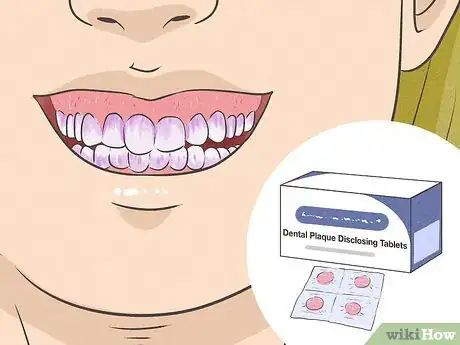
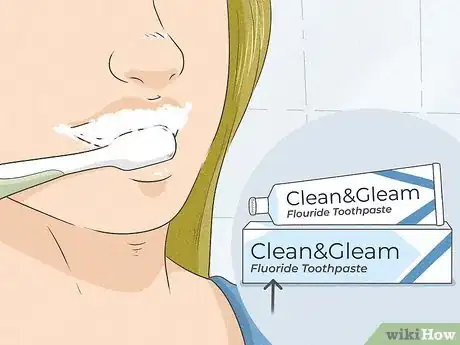
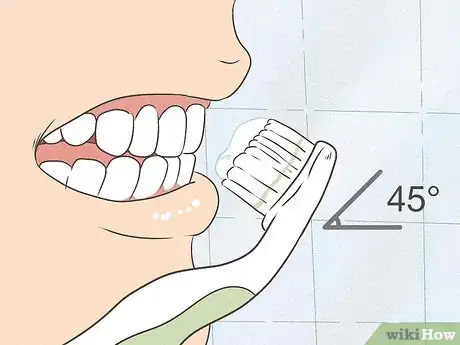

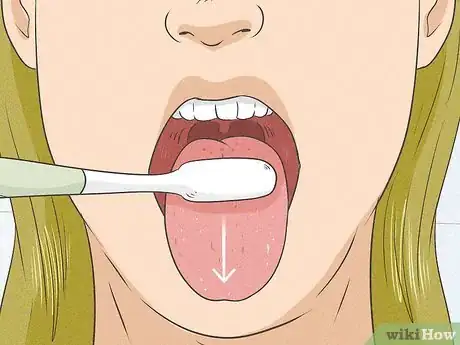


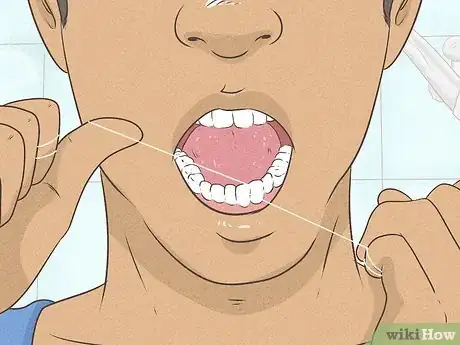
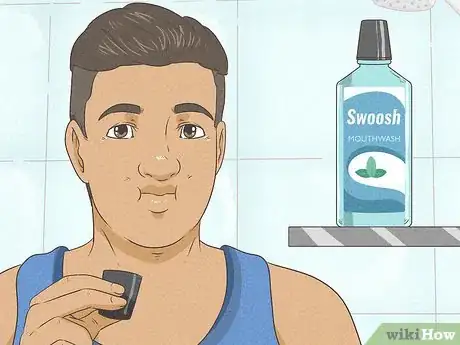

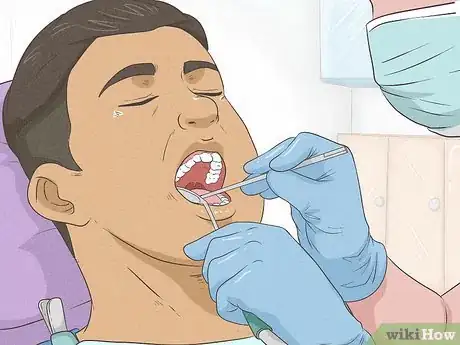


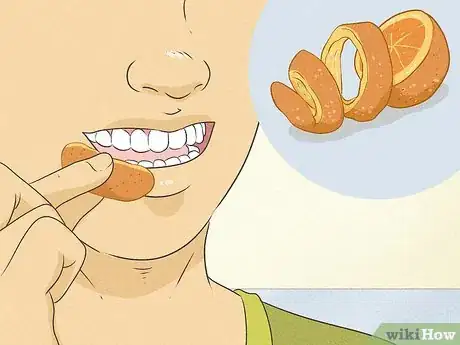
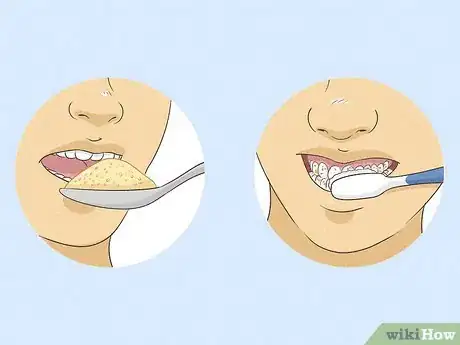

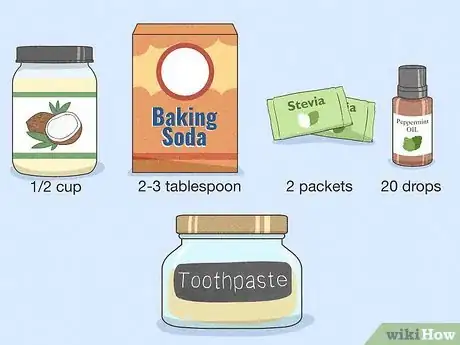
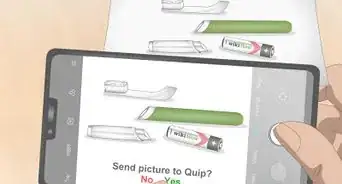


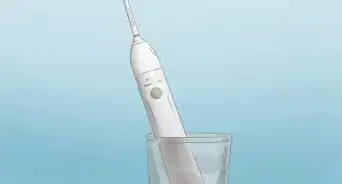

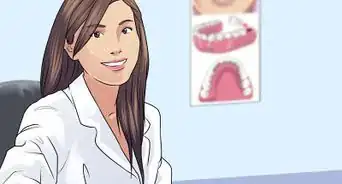


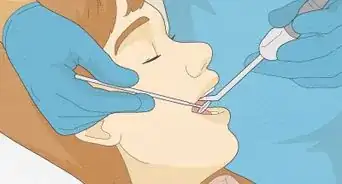
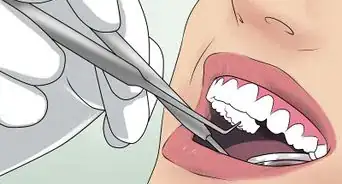
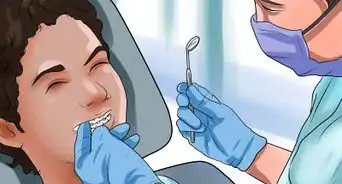













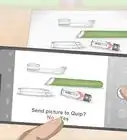
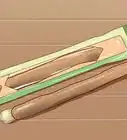
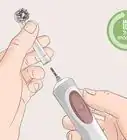



































Medical Disclaimer
The content of this article is not intended to be a substitute for professional medical advice, examination, diagnosis, or treatment. You should always contact your doctor or other qualified healthcare professional before starting, changing, or stopping any kind of health treatment.
Read More...